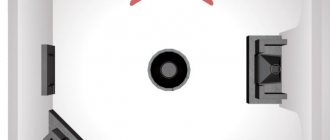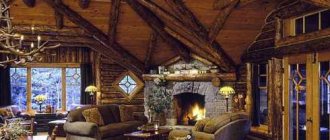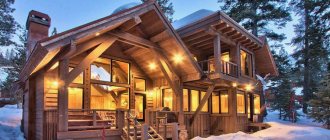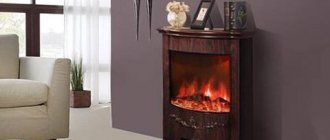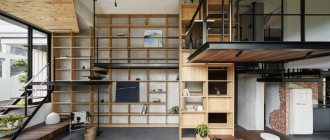Gas fireplaces are increasingly among the most popular heat sources, because they perform not so much a decorative role as a full-fledged functional task, even in comparison with more classic wood-burning fireplaces. If we discard decorative elements, then a gas fireplace can even be used as the main source of heat. Energy consumption is quite acceptable, plus, the same temperature is constantly maintained. For example, for an average house in a village, the area of which is 50 square meters. The power of the unit should vary between 3-8 kW. Moreover, take into account the fact that the efficiency of such devices is more than 80%.
Gas fireplace installation
A gas fireplace using bottled gas or any other consists of special compartments. For example, the firebox is considered the main and main element; it can be of completely different configurations and shapes. Open, closed, combined mode and others. In this way, a wide variety of design ideas can be created. The body is often made of durable heat-resistant steel; a burner and a reflector are placed inside - also known as a screen. All structural parts are covered with special panels that seem to imitate natural wood. The panels are made from heat-resistant materials such as ceramics. They prefer to make the front side where the door is made of glass so that they can enjoy the flame.
Installation of liquefied gas cylinder
The process of removing gases occurs using a chimney, which, by the way, also plays the role of fresh air ventilation. Take into account an important point when constructing channels, pay attention to the formation of draft, especially in closed chambers.
As for the decor and cladding, great importance is attached to these details. When forming a “portal”, you need to use only durable materials, for example, the recently popular heat-resistant plasterboard, porcelain stoneware, and natural stone. The “portal” must provide an exit from the furnace from the heated air. By the way, automation is no stranger to fireplaces; as a rule, such systems are sold as a set and allow you to remotely and automatically regulate the temperature.
How to install a gas fireplace using bottled gas
First, you need to mark the area on which the structure will be located and, based on these indicators, begin installation.
If the fireplace will be installed on the floor, it must be leveled and non-combustible material placed. The walls to which the fireplace is adjacent are covered with metal foil, brick or fire-resistant tiles.
When hanging the fireplace on the wall, the placement location is determined and holes are made. The structure is secured using anchors.
Then they build a channel from brick material for the chimney, install the system itself and connect it to the firebox. The height of the pipe facing the roof depends on the location of the ridge, and a special cap is used to close it.
For built-in fireplaces, suitable material is used, and gaps are made so that the structure can be cooled. To ensure that adjacent rooms are also heated, special channels are removed from the firebox and lined with fireproof material.
After installing the fireplace, a place is chosen on the site to locate a special steel cabinet, and it is insulated from the inside so that low temperatures do not affect the fuel. Then the cylinders are placed in the cabinet and the connection is made. A reducer must be installed on the cylinder; it controls the gas pressure. The gearbox has a special outlet for connecting the gas pipeline hose; a clamp is used as a fastening, it is tightened with a screw. This system is used to prevent fuel leakage. If it is difficult to make an independent connection, then you need to seek the help of specialists.
Advantages and disadvantages
A gas fireplace for your home has a certain list of positive aspects, such as:
- Much more environmentally friendly, cleaner than wood-burning stoves, because much less harmful fumes and resins enter the air.
- Structurally, gas appliances are simpler, and the price characteristics are advantageous in this regard.
- Possibility to enjoy the flame, as in wood-burning structures.
- High performance, up to 8 kW.
- Quite easy to maintain, does not require frequent cleaning and maintenance, and does not require constant monitoring.
As for the disadvantages, there are certainly some caveats, such as:
- To install a gas fireplace in an apartment or for a country house, you will need a special permit;
- installation is permitted only by a certified specialist;
- Natural or propane gas is used as fuel, therefore, if operating rules are not followed and the system is violated, such units can cause serious trouble.
Peculiarities
Wood-burning fireplaces are considered a classic among the variety of heating devices.
The decline in sales is due to the emergence of a solution that eliminates the need to collect firewood, fuel brackets, waste time on kindling, and carefully monitor work to prevent fire hazards. Due to the release of hazardous substances into the environment and an efficiency of 15-20%, wood-burning fireplaces are losing ground. Russians choose gas. They have no weaknesses: fire hazard, difficulties in control, laying firewood and kindling. The performance of gas fireplaces depends on the design. Heat-resistant steel is used in the manufacture of the firebox. The walls of the combustion chamber are ribbed to increase the heat transfer area. A burner with a piezoelectric element and automatic sensors is located at the bottom of the firebox. False logs or coals mask it. The gas comes from the burner and envelops the dummy firewood in flames, simulating a flame.
To adjust the settings, there is a panel on the outside and a remote control. Models with automation are complemented by a controller that regulates combustion. In addition, they are equipped with sensors for flame extinguishing, loss of draft, and interruption of fuel supply. If one or two sensors are triggered, the system will suspect a malfunction and immediately turn off the unit. Additional security is achieved with the help of sensors powered by a battery or by connecting the equipment to the mains.
There are no universal instructions for installing a gas fireplace. Each manufacturer has specific requirements for the installation location, ventilation system, organization of access of air masses to the firebox - a chimney or a special channel. Main gas appears as the leading source of fuel. When installing such a model, they obtain permission from the local gas service workers and order installation from them. Only models running on liquefied gas can be connected independently.
For the manufacture of pipes, anti-corrosion and temperature-resistant materials are used. Reliable material – special steel. Ready-made collapsible chimneys with a heat-insulating layer are flexible, suitable for removing combustion products through walls or ceilings and for extension to the required length.
Connecting a gas fireplace requires control and permission from the relevant services, so before installation you should contact representatives of the gas office to obtain permission. You should not ignore this point, as you endanger not only your own life, but also the lives of your neighbors. The connection process and setting up the fireplace are also supervised by a representative of the control service.
As for the chimney, it is mounted using a technology different from the classic hearth. The pipe must not only resist temperature, but also be resistant to condensation, which tends to form due to temperature changes. The best choice for a chimney is stainless steel, wrapped in thermal insulation, which will protect surrounding materials from ignition.
The requirements for installing convectors are as follows:
- The room in which the gas fire is planned to be installed must certainly be well ventilated, and the firebox should not be exposed to a draft, which certainly occurs when windows and doors are open.
- If the firebox at the hearth is not insulated with a glass door, interior items and personal belongings should be kept away from open fire. The permissible distance must be indicated in the instructions.
- The fireplace is installed to the outer wall, in which a smoke channel must be installed, with an exit to the outside.
- Island gas fireplaces, located far from the walls, require special hanging chimneys, which makes it impossible to install them on the lower floors of apartment buildings.
(See also: DIY stone fireplace)
Principle of operation
As for the principle of operation, a gas fireplace, regardless of whether it is for a dacha or an apartment, has the same operating procedure. Through a special pipeline, gas is supplied to the firebox, where air is also delivered; as a rule, fireboxes are closed for safety. Combustion or complete combustion is regulated by special sensors or in a random order, according to the same principle as classic gas stoves for cooking. The principle of gas removal is similar and not fundamentally different from wood or gas boilers.
Scheme of work
The most complex element of the system, as many thought, is not the chimney, but the burner itself. A gas burner for a fireplace with your own hands can only be created if all the rules and features are combined, otherwise they will not be able to arrange it for you. Therefore, think in advance, perhaps it will be cheaper and more reliable to buy a ready-made burner and not “be tricky” with making it yourself.
Installing a homemade fireplace
You can create a biofireplace yourself if you comply with several conditions and first stock up on the necessary materials. For the basis of the future hearth, take glass - the rectangular structure will act as a firebox and the main decorative element of the hearth.
Let's start by creating the most important base of the fireplace - a metal box with a grate, where the fuel container and fuel tank of the hearth will be located. It is important to determine the size of the future structure and first draw it on a sheet of paper with calculations - this will save time on creating a fireplace and using materials.
Cut the glass blanks according to the measurements, glue them together and allow the product to fasten. Create a fuel tank and install it in the base of the future bio-fireplace; now place the mesh surface and place the burner on it: do not forget the wick. Use stones as decoration: place them on a mesh grid.
It is surprising that such a home-made design and even a purchased model of a biofireplace does not require prior permission and special requirements for the installation of the fireplace, approval and establishment of the legality of the design. Building a fireplace is so simple, but in any case you will not be able to avoid drawing up an estimate to understand the feasibility of such an installation.
It is still better to install a fireplace on the top floor if it is massive and powerful in its design; other models will come in handy even in a small room. The height of the fireplace completely satisfies the owner of the fireplace and does not oblige him to obtain permits from any authorities, and installing the device in the room is sometimes not difficult.
1 / 5 ( 1 vote)
Firebox shapes
A gas fireplace is chosen not only for its performance; the shape of the firebox also has a significant impact. Moreover, it plays a role on what kind of heating equipment the fireplace uses, stationary or balloon method. There are several main types of fireboxes based on location:
- “Front” for placement against walls. (classic method).
- Corner types, for installation in corners.
- “Island types” are designed to be placed in the center of a room, around a specific location. (They have visibility from any side).
- Double sided. I use them for installation in two rooms at once, because the firebox is visible from both sides. As a rule, only minor class partitions are suitable for this purpose.
Front fireplace
When choosing, consider not only your aesthetic preference, but also the very possibility of connecting communications to the chosen location. For example, for suburban buildings, the supply can be made in any condition, even through a wall or ceiling. But apartment fireplaces are somewhat problematic; in such cases, the choice falls on only two main types of placement: corner and front. Moreover, they should be located near the external walls through which the pipe will be “installed”.
How to build a simple fireplace
Diagram of the biofireplace device.
If the construction of a gas fireplace requires a special approach and special knowledge, then the construction of a simple fireplace will not cause serious difficulties, since the technology for its construction is quite simple even for a beginner who has basic experience in construction.
To build a simple fireplace you will need:
- red brick (370 pcs.);
- valve (24x13 cm);
- reinforced concrete slab for portal and shelf;
- Master OK;
- level;
- roulette;
- cord for laying straight rows;
- chisel;
- wire cutters;
- sponge or brush to moisten the walls;
- grinder with diamond blade;
- square;
- hammer-pick;
- stove ruler;
- jigsaw
The proposed scheme is designed for the construction of a fireplace measuring 1013 mm long and 630 mm wide across the entire height of the room.
Performing markings
The first stage of work involves marking the fireplace table - the base of the fireplace at floor level. The dimensions of the table are first marked in the form of points through which straight lines are subsequently drawn. At this stage, it is important to correctly mark the parameters of the fireplace corners; they must be strictly 90°.
To mark the opening for the pipe, the center of the fireplace table is determined, and the found point is projected onto the ceiling using a plumb line. Thus, the point on the ceiling indicates the location of the center of the pipe. Next, starting from this point, measure the required distances and mark the walls of the pipe. Nails are driven into the corners of the future pipe. To line the pipe with brick, a hole is cut in the roof, 12 cm larger than the pipe parameters in each direction.
Choosing a place to install a fireplace
A gas fireplace for your dacha can be placed subject to the rules and regulations for the operation of such units. The most important point when installing systems is the ability to connect to a ready-made chimney without significant problems. For example, for apartments, as already mentioned, installation is carried out near external walls. For suburban buildings, it is realistic to offer a full-fledged vertical chimney. At the same time, do not forget that special attention should be paid to the thermal insulation of floors. Often, two-section sandwich pipes are used for houses.
Other requirements for installing fireplaces include special placement rules; they should not be placed near flammable materials such as furniture. In addition, a mandatory requirement is the lining of the fireplace walls, because during operation they get quite hot. As mentioned above, in addition to the lining, it is also necessary to provide additional ventilation outlets so that the air that accumulates between the lining and the fireplace wall escapes into the room.
How to create comfort in your home with your own hands
Hello, dear friends.
The topic of our article today is a gas fireplace. A fireplace in a house always says a lot about the owners. This is, first of all, an element of comfort and hospitality. Houses with a fireplace are remembered for a long time for their calm and pleasant atmosphere. But we should not forget that fireplace owners spent a long time thinking about which fireplace was best to choose.
And special attention is paid to the type of fuel for fireplaces. Why is this so important? Because different types of fuel make the fireplace more or less efficient. Also, when choosing a fireplace, the price is often a determining factor. Often budget fireplaces use a type of fuel that is not acceptable for the premises. For example, liquid fuel fireplaces are not in demand due to the odor that the fuel gives off.
Gas is an economical type of fuel, and gas fireplaces do not require complicated operation. Therefore, many owners prefer gas fireplaces. Also, the fireplace owner is faced with the question of what type of gas to choose - methane, propane or butane. But no matter what type of gas is chosen, it will be much more environmentally friendly than wood or coal. And if you compare the prices for this fuel, it becomes clear that it is more acceptable.
Gas fireplace
You can also place a special type of eternal firewood in a gas fireplace and then the appearance of the fireplace will become much better and more beautiful. Fireplaces of this type can have an open or closed firebox, so a high-quality imitation of the type of flame is necessary.
A gas fireplace must be equipped with a chimney, since during operation the gas emits combustion products that must be removed from the room. The disadvantage of a gas fireplace is that sometimes it cannot be used as an apartment fireplace due to the need to install a sufficiently powerful chimney. Sometimes there is a ban on installing a gas fireplace in an apartment.
The advantage of a gas fireplace is that the gas supply can be regulated and thereby regulate the heat supply. This is very convenient and economical, because when the room is warm, you can reduce the gas supply and then the heat will flow less intensely.
Gas fireplaces can often be controlled using a remote control, making them even easier to use. In addition, such a fireplace does not require the owner’s close attention, since there is no need to constantly add fuel to the fireplace; you just need to turn the gas supply valve in time or do it using the remote control.
It should be noted that a gas fireplace is often installed in a country house, because gas is considered an explosive fuel and therefore a gas fireplace in an apartment is very rare. The gas supply to the fireplace is usually carried out either from a special cylinder or from a central gas supply. This is a fairly simple version of the fireplace, which requires special attention during installation.
As a fireplace accessory for this type of fireplace, a special lighter is offered, which makes lighting the fireplace as safe as possible.
There are no style restrictions with a gas fireplace. It can be a classic fireplace, a high-tech fireplace, or even an exclusive fireplace. Absolutely any material can also be used as a material for fireplaces. The main thing is to choose a material that will accumulate heat.
Type of gas fireplace
Also, a requirement for the material may be its degree of non-flammability, since some consider gas to be a highly flammable material. Maintaining a gas fireplace is quite easy since it does not require cleaning. Only the functionality of the chimney is subject to regular inspection.
Otherwise, operating a gas fireplace does not seem difficult. And the aesthetics of such a fireplace greatly exceeds the aesthetics of a wood-burning fireplace.
Good luck and see you again!
If you have anything to add to this article, I will be glad to see your comments ! If you liked it, recommend it to your friends on social networks.
That's all for me, thank you for reading my blog!
With uv. Purich Valery
By
What should you consider during installation?
When installing in apartments, you need to remember that laying it in walls and on the floor is prohibited. In addition, for an apartment, special requirements are attached to sealing all seams. In addition, remember that gas fireplaces for summer cottages are not recommended to be located near drafts. Also pay attention to such points as the presence of furniture near the fireplace; all flammable design elements and others must be removed to a safe distance. Especially when it comes to fireplaces with an open firebox.
By the way, when installing gas fireplaces, you should remember that they are more susceptible to the release of moisture and carbon dioxide. Therefore, the chimney shaft must meet all conditions for the release of aggressive substances. It is better to use multi-circuit stainless pipes with the necessary layer of thermal insulation.
Gas fireplace and its place in the interior
Gas fireplaces are an excellent solution for heating public spaces and residential premises.
The gas heaters under consideration can be used:
- for a country house;
- for a summer residence;
- for an apartment;
- for a restaurant;
- for office;
- for a hotel.
The best option for installing a gas fireplace is in rooms with centralized natural gas.
On the heating heater market you can find different forms of these gas devices. These can be unusual pyramidal or round, classic rectangular models. It is possible to choose a fireplace based on the price and area of the room.
If you like gas fireplaces with an open firebox, then remember that these devices cannot be installed in a place where there is exposure to air currents. After all, drafts affect the burner and thereby interfere with gas combustion. Outdoor models must be installed with caution.
Gas fireplace installation procedure
Gas fireplaces for heating require no less attention than a conventional stove or boiler. It is necessary to take into account a certain operating procedure, including:
- Preparing the space. Pipes (gas, chimney) are supplied. If the fireplace operates on liquefied gas, you need to prepare a site for installing the cylinder.
- The load on the “cushion” is calculated, take into account the average values, which is no more than 800 kg per meter. The floor is leveled and covered with a non-flammable coating, and the same work is done with the wall.
- The firebox is being installed; for subsequent connection, you need to call the gas workers.
- The firebox is connected, after which the draft in the supplied chimney is checked. If the draft is not enough, you need to lengthen the channel, or buy a forced fan.
- Proceed with cladding and installation of the “screen”. You can use any fire-resistant material, including drywall. But remember, about the installation features, you need a special sheathing.
- If necessary, automation is connected.
Device and functions
Natural gas and bottled gas fireplaces have the same structure and differ only in the diameter of the nozzle on the burner. The firebox contains a heat exchanger with an increased area due to the design of the fins. The burnt gas enters the smoke collector - a special conical casing designed to prevent combustion products from scattering and entering the room. The chimney is a continuation of the smoke collector.
Wall-mounted fireplace variation for an apartment
Gas is supplied to the furnace using a burner, which is a pipe with nozzles. Located in the lower part, it is practically invisible to the observer. Some models provide for masking the burner with fake logs. This dummy is made of ceramic and does not burn from flame.
If the fireplace model is closed, the firebox is protected by special fire-resistant glass. Through it you can calmly admire the living flame. The automation system or controller is located in the cold zone. It serves to process signals coming from sensors and provides feedback by regulating the gas supply.
Fireplaces using liquefied gas are equipped with a compartment in which the cylinder is placed. You can easily install such a cylinder in the fireplace body under the firebox itself. Its capacity depends on the specific model.
When you turn on the fireplace by pressing a button or turning a knob (it all depends on the model of the control panel), feeding begins. Then, using the piezoelectric effect, a spark is created that ignites the gas. The fireplace has started and will begin heating to the set range.
Is a chimney required?
During operation of a gas fireplace, combustion products are also released, so this type of equipment requires a chimney. There are special requirements for chimneys that discharge combustion substances. Thus, they must be not only heat-resistant, able to withstand high temperatures of about 500 degrees Celsius, but also moisture-resistant, since moisture is formed in combustion products.
The most suitable chimneys for these purposes are modular stainless steel chimneys, for example those produced by St. Petersburg.
Attention! If there is flammable material on the inner surface of the chimney, it should not come into contact with combustion products and the exhaust pipe to avoid a fire.
